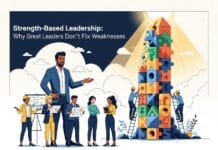Working with people around the world can be exciting. You get new ideas, different viewpoints, and fresh problem-solving styles. But it is not always easy. Cultures can clash. Schedules do not match. Sometimes, even simple messages get lost in translation. That is why trust becomes the glue that holds everything together. Without it, things can fall apart fast.
One of the first steps in any global project is to map stakeholders. You need to know who is involved, how they connect, and what they care about most. This is the starting point. Once that’s done, the real work begins—turning a list of names into genuine relationships.

Why Mapping Should Come First
Mapping gives you a bird’s-eye view. You see the people who make decisions and the ones who quietly influence them. You spot allies and potential blockers. It is like having a map before hiking in an unknown forest—you will still face challenges, but at least you know the terrain.
Without this step, you might waste hours talking to the wrong people. Or worse, you might miss someone with silent but powerful sway. A clear map lets you decide who needs close attention and who just needs a quick check-in now and then.
Looking Beyond Titles and Roles
A common mistake is to focus only on job titles. The truth? Titles do not always reflect real influence. Sometimes, the person who shapes opinions the most is not the one with the biggest office.
These “quiet influencers” might not speak much in large meetings, but others listen when they do. Spotting them early can change the game. They can help you win support, explain local challenges, or warn you about brewing issues. That kind of insight can be more valuable than any official report.
Understanding the Cultural Layer
Culture plays a huge role in how people work together. Every country—and sometimes every region—has its own rhythm. Something polite in one place can seem rushed or even rude in another.
If you are serious about building trust, learn a few basics. Find out how people prefer to communicate. Learn if decisions are made fast or after long discussions. Respect holidays and working hours. These small steps make people feel seen and respected. And respect is the fastest route to trust.
Moving from Lists to Real Conversations
Mapping is just the prep work. Engagement is where trust grows. This means going beyond updates and sending out newsletters. It is about reaching these people, not just talking to them.
Hold regular check-ins that actually matter. Keep them focused, but leave space for casual talk too. Ask questions. Listen without rushing to respond. And when you act on their feedback, let them know. People notice when their input leads to action.
Keeping Communication Honest and Steady
Trust is fragile. One broken promise or a half-truth can undo weeks of progress. That’s why clarity is everything. If something is delayed, say so. If a problem comes up, explain it. You do not have to share every detail, but don’t hide the truth.
Consistency is just as important. If you say you’ll send an update every Monday, send it every Monday. Even a short note is better than silence. Over time, this kind of reliability builds a sense of safety around your leadership.
Working Around Time Zones and Tech Limits
Time zones are a constant hurdle in global work. You cannot expect everyone to join meetings at the same hour every week. Spread the inconvenience. Rotate meeting times so the same people aren’t always waking up early or staying up late.
Also, not everyone uses the same tech tools. Some platforms might be common in one country and unheard of in another. Ask what works for them before making a decision. Adapting like this shows you value their comfort, which makes engagement feel more equal.
Thinking Long Term
Trust does not grow overnight. It builds in small layers—kept promises, honest talks, and shared wins. Protect it like an investment. Give credit when others contribute. Be upfront when things go wrong. These moments matter more than big speeches.
Remember, your connection with stakeholders might outlast the project. You might work with them again in five years under totally different circumstances. A positive history can make that future partnership smoother from the start.

Turning a Plan into a Partnership
Mapping stakeholders helps you understand the landscape. Engagement helps you move through it with confidence. The two are linked—one gives direction, the other builds momentum.
When you put in the work to map carefully, you avoid surprises. When you follow that with genuine, respectful engagement, you gain allies instead of just contacts. Those allies will speak up for your project when you are not in the room. And that can be the difference between success and failure in a global setting.
So, start with the map. Learn who the key players are. Understand what matters to them. Respect their ways of working. Communicate with honesty and show up when you say you will. In time, you will have more than a list of stakeholders—you will have a network of trusted partners who want to see you succeed.





